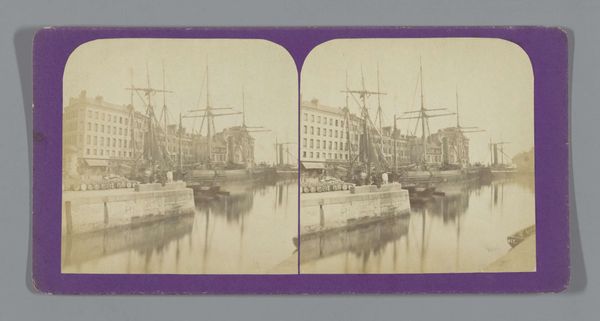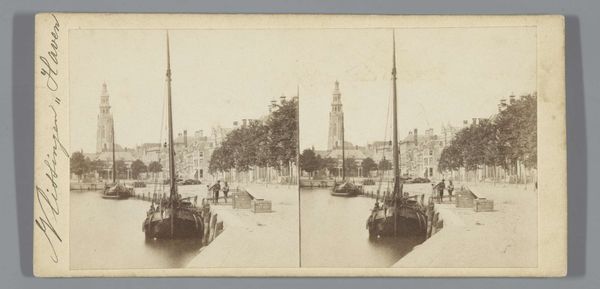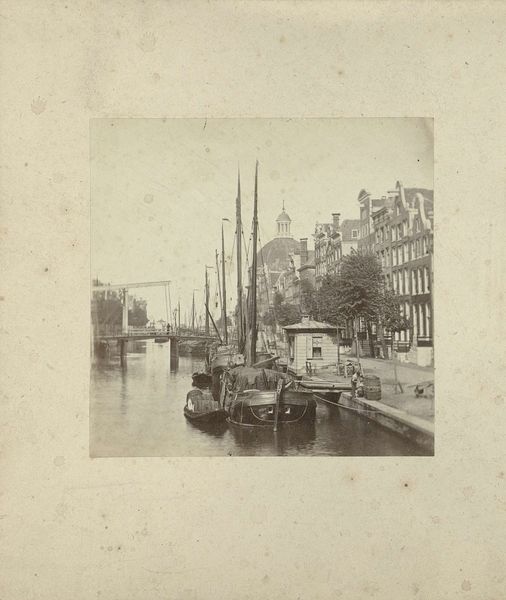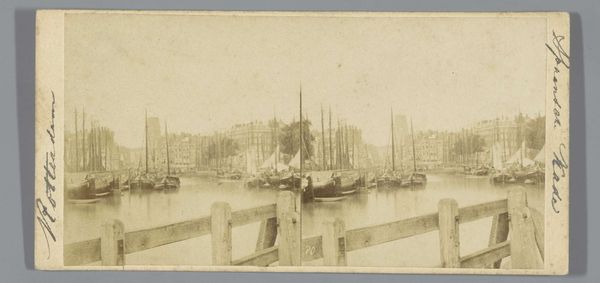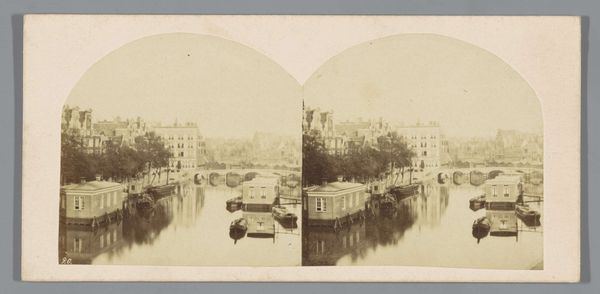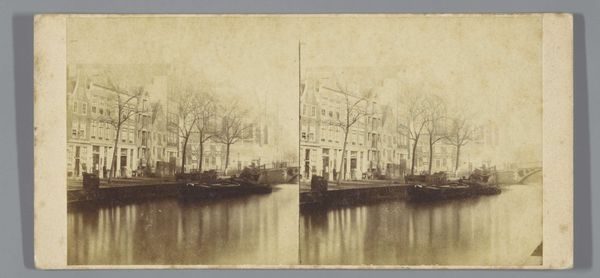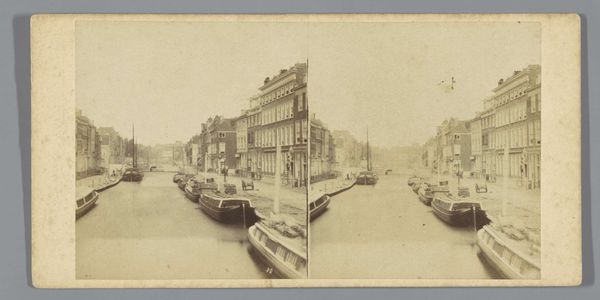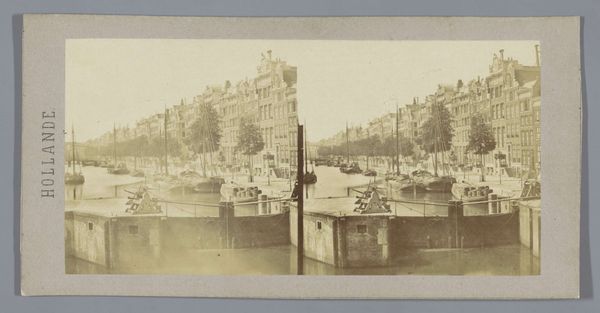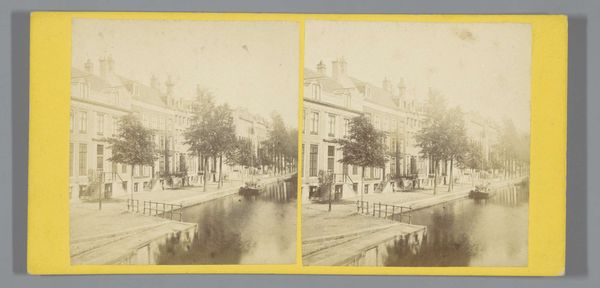
Gezicht op de Prinsengracht bij de Bloemgracht in Amsterdam 1860 - 1885
0:00
0:00
photography, gelatin-silver-print
#
dutch-golden-age
#
photography
#
coloured pencil
#
gelatin-silver-print
#
cityscape
#
realism
Dimensions: height 83 mm, width 170 mm
Copyright: Rijks Museum: Open Domain
Curator: Before us is a gelatin silver print from between 1860 and 1885. Titled “Gezicht op de Prinsengracht bij de Bloemgracht in Amsterdam,” this cityscape view was captured by Pieter Oosterhuis. Editor: My initial impression is one of subdued stillness. The monochromatic palette adds a sense of history and perhaps even a touch of melancholy, but it's more quiet observation than deep sadness. Curator: The quietness you describe certainly mirrors the social conditions of Amsterdam at that time. Oosterhuis’s documentation reflects the rising merchant class’s confidence and stability during the Dutch Golden Age, even decades after its peak. Photography itself was becoming more accessible and played a growing role in documenting and shaping perceptions of urban life. Editor: Exactly! And the angle, the positioning of the boats, it isn't just a record. The masts create these stark vertical lines, bisecting the buildings, disrupting what could have been just another bourgeois display of Amsterdam's architecture. Curator: Oosterhuis’s choice of medium and perspective provided a broader, more ‘realistic’ view compared to painted cityscapes. Gelatin silver prints allowed for finer detail, aligning with the period’s burgeoning scientific interest in precise observation and documentation. Editor: And yet the lack of vibrant color transforms familiar reality, creating a deliberate intervention within the contemporary ideas of realism. Looking at the architecture and the sparse detail, one has to think of the human impact, the labor behind creating these waterways. Who lived and died alongside the development of this idealized view? Curator: It's this intersection that underscores the photograph’s broader impact, going beyond aesthetic pleasure to becoming a lens through which we examine Amsterdam’s social stratification. The city, even then, was a product of commerce, hard labor, and strategic urban planning. Editor: So, in considering it all, it's not just a simple record of a street view, but an open inquiry. The calm surface belies questions of social conditions, hidden labor, and manufactured legacies. Curator: Yes, viewing this cityscape prompts reflection, demonstrating how photographs, even those rooted in seemingly straightforward realism, can unlock deeper considerations of power, social structure, and hidden stories.
Comments
No comments
Be the first to comment and join the conversation on the ultimate creative platform.

